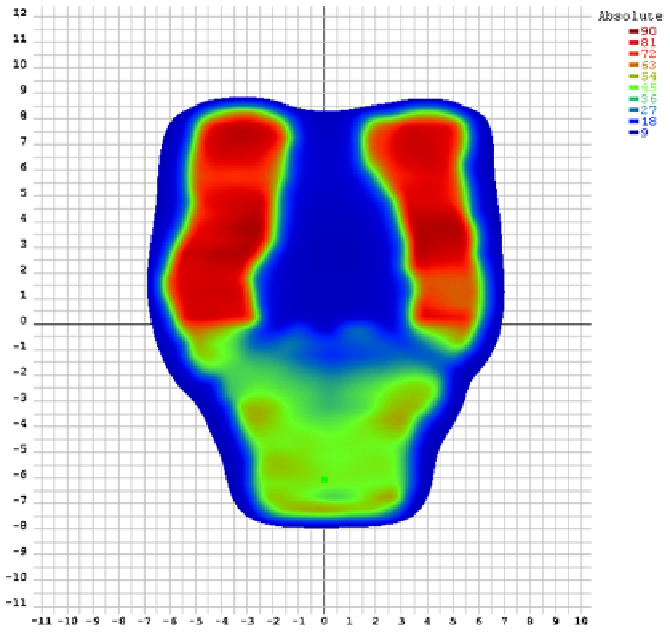Information Technology Reference
In-Depth Information
4 Intensity Modulated Radiation Therapy
In external beam radiotherapy, a linear accelerator is used to accelerate electrons of
energies between 6 and 23 MeV, which hit a tungsten target in order to produce ioniz-
ing photon radiation. These photon beams, in turn, are collimated down via adjustable
apertures that are precisely shaped for a tumor within a patient. The linear accelerator
has a rotating gantry that is able to treat a patient using an isocentric technique. Typi-
cally, a fixed number (anywhere from 5-9) of beam angles are used to target the tu-
mor so that it is irradiated from different directions in order to decrease toxic radiation
dose to surrounding critical structures.
Over the last decade, multileaf collimators (MLC) have been introduced which al-
low the collimation to be modulated in real time during the beam delivery process.
This treatment is more commonly known as Intensity Modulated Radiation Therapy
(IMRT). Instead of a single dose of radiation delivered through a shaped aperture,
IMRT allows a checkerboard-like intensity pattern of dose to be treated. Each section
of the beam that has a different intensity is considered a beamlet. Depending on how
long the MLC leaves remain in the path of the radiation will modify how much dose
is delivered directly beneath the blocked area. An example of an intensity pattern
from a posterior beam entry for a prostate cancer patient is given in Figure 5.
Fig. 5.
IMRT intensity pattern from a posterior entry beam for a prostate cancer patient

Search WWH ::

Custom Search